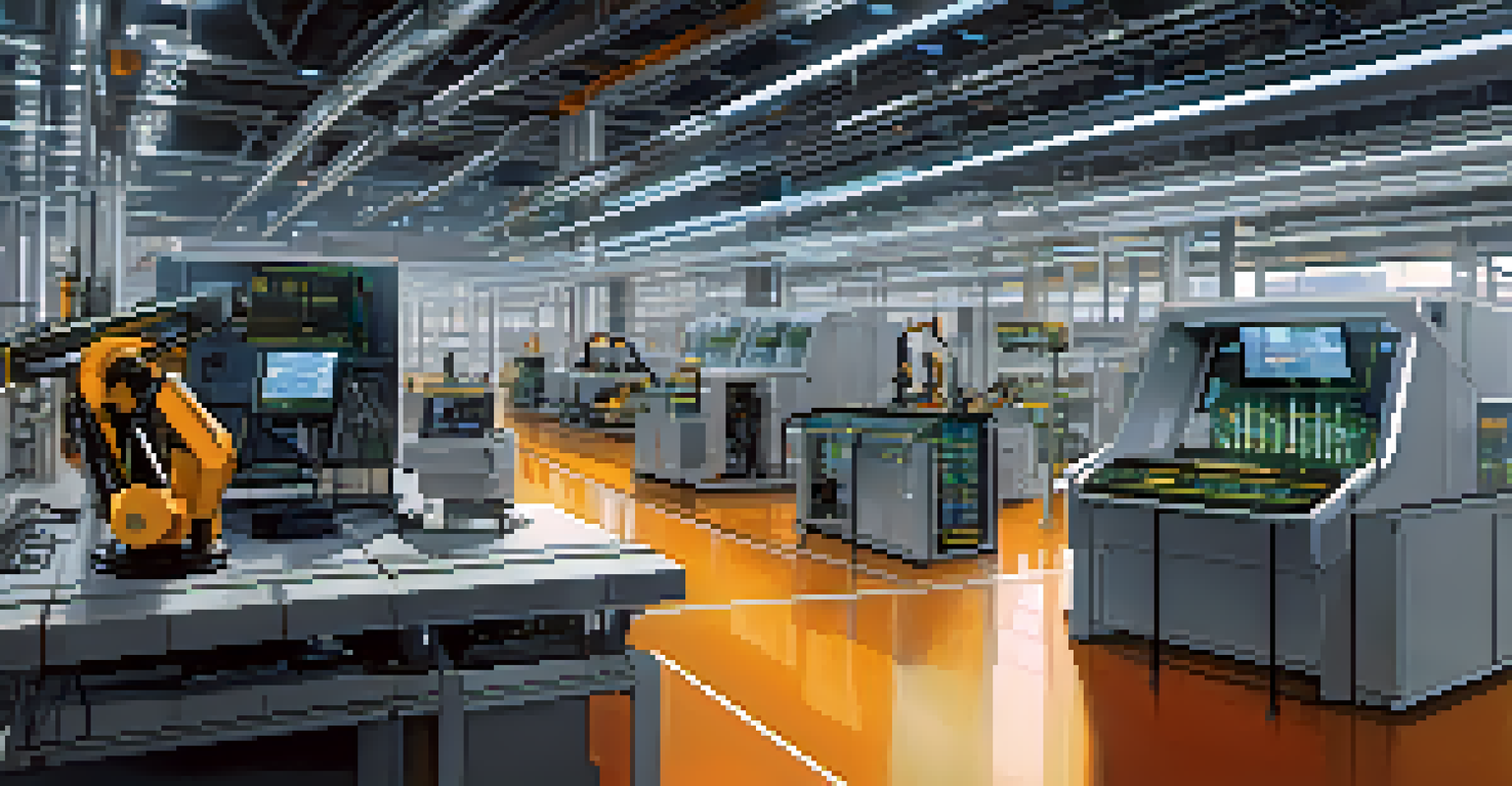Understanding Cyber-Physical Systems: An Overview of Key Concepts

What Are Cyber-Physical Systems (CPS)?
Cyber-Physical Systems (CPS) blend computing, networking, and physical processes. They integrate software and hardware to enable real-time monitoring and control. An example is the smart grid, which uses sensors and data analytics for efficient energy distribution.
Cyber-physical systems are the next wave of innovation, blending the digital and physical worlds to create smarter environments.
CPS can be found in various applications, from automotive systems to healthcare devices. These systems rely on interconnected components that communicate and react to changes in their environment. The seamless interaction between the physical and digital worlds is what sets CPS apart.
Understanding CPS is essential because they play a significant role in the development of smart cities and industries. As technology continues to evolve, the need for a robust framework to manage these systems becomes increasingly critical.
Key Components of Cyber-Physical Systems
CPS consists of several key components: sensors, actuators, and control systems. Sensors collect data from the physical world, while actuators perform actions based on that data. Control systems process the information and make decisions to ensure the system operates efficiently.

The interplay between these components is crucial for the performance of CPS. For instance, in an autonomous vehicle, sensors detect obstacles, actuators steer the car, and the control system processes this information to navigate safely. This interconnectedness creates a seamless experience.
CPS Integrate Physical and Digital Worlds
Cyber-Physical Systems (CPS) combine computing and physical processes to enable real-time monitoring and control across various applications.
Moreover, the reliability of each component directly impacts the overall system's performance. A malfunctioning sensor can lead to incorrect data interpretation, causing cascading failures throughout the CPS. Therefore, ensuring the integrity of these components is vital.
The Role of Networking in CPS
Networking is a backbone of Cyber-Physical Systems, enabling communication between devices. It allows different components to share data and work collaboratively, enhancing the system's functionality. Without robust networking, the effectiveness of CPS would be severely limited.
The future is not about technology, but about how we can integrate technology into our daily lives effectively.
For example, in a smart home, various devices like thermostats, lights, and security systems communicate over a network to create a cohesive living environment. This connectivity not only improves convenience but also increases energy efficiency and safety.
As the Internet of Things (IoT) continues to grow, the importance of reliable networking in CPS will only increase. Ensuring secure and efficient data transmission is essential to maintaining the integrity and performance of these systems.
Challenges in Cyber-Physical Systems
Despite their many benefits, Cyber-Physical Systems face several challenges. Security is a significant concern, as these systems can be vulnerable to cyberattacks. A breach could compromise both the data integrity and the physical safety of the system.
Another challenge is the complexity of integrating various components. Different devices and systems may use disparate protocols, making it difficult to achieve seamless communication. This complexity can lead to interoperability issues, hindering overall performance.
Key Components Ensure System Functionality
The effectiveness of CPS relies on the seamless interaction between sensors, actuators, and control systems to maintain optimal performance.
Additionally, real-time processing is critical for CPS, and delays can have serious consequences. Ensuring that systems can process data and respond instantly is a constant challenge for developers and engineers in this field.
Applications of Cyber-Physical Systems
Cyber-Physical Systems have a wide range of applications across various industries. In healthcare, for instance, CPS enable remote patient monitoring and smart medical devices that provide real-time data to healthcare providers. This enhances patient care and operational efficiency.
In manufacturing, CPS contribute to the development of smart factories, where machines communicate and optimize production processes. This not only increases productivity but also reduces waste and operational costs.
Transportation is another area where CPS shine, particularly with the advent of autonomous vehicles. These systems rely on real-time data to navigate, ensuring safety and efficiency on the roads. As such applications continue to evolve, the impact of CPS will only grow.
Future Trends in Cyber-Physical Systems
The future of Cyber-Physical Systems is poised for innovation, driven by advancements in technology. Trends like artificial intelligence (AI) and machine learning are increasingly being integrated into CPS, enabling smarter decision-making and predictive analytics. This evolution will enhance the efficiency and reliability of these systems.
Moreover, the rise of edge computing is likely to play a significant role. By processing data closer to the source, systems can respond more quickly to changes in the environment. This can be particularly beneficial in time-sensitive applications such as autonomous vehicles and industrial automation.
Security and Integration Are Challenges
CPS face significant challenges, including security vulnerabilities and the complexity of integrating diverse components for effective communication.
As we move forward, the need for standardized protocols and frameworks will become more pronounced. Establishing universal guidelines will facilitate better integration and communication among diverse CPS, ultimately leading to more robust and efficient systems.
Conclusion: Embracing Cyber-Physical Systems
In conclusion, Cyber-Physical Systems represent a transformative approach to integrating technology with the physical world. Their ability to enhance efficiency and productivity across various industries cannot be overstated. As we increasingly rely on these systems, understanding their components and challenges becomes vital.
Embracing CPS will require a commitment to innovation and security, ensuring that systems are not only efficient but also safe from potential threats. Stakeholders across sectors must collaborate to address challenges and harness the full potential of these systems.

Ultimately, as CPS continue to evolve, they will shape the future of technology and society, pushing boundaries and redefining how we interact with the world around us.